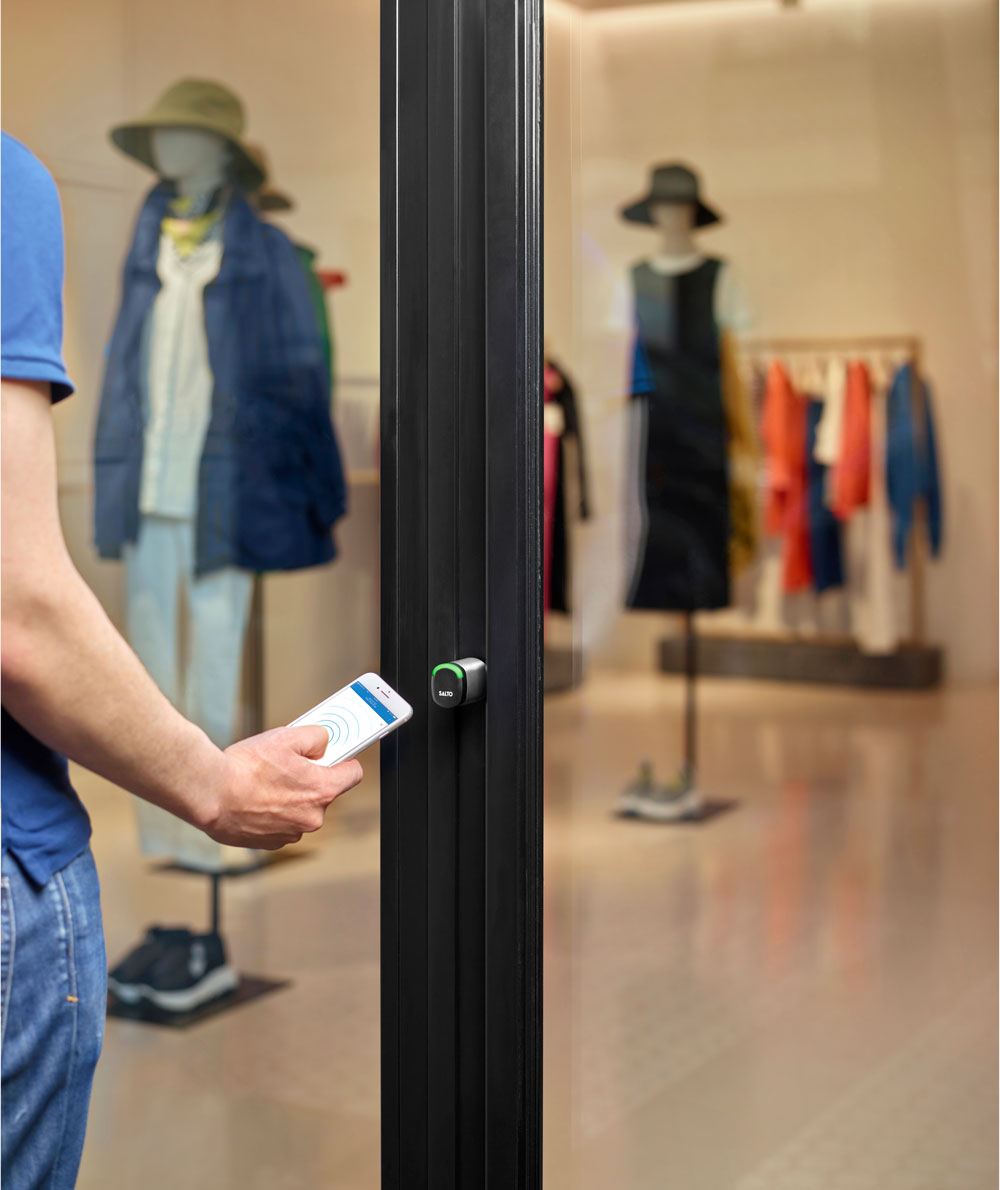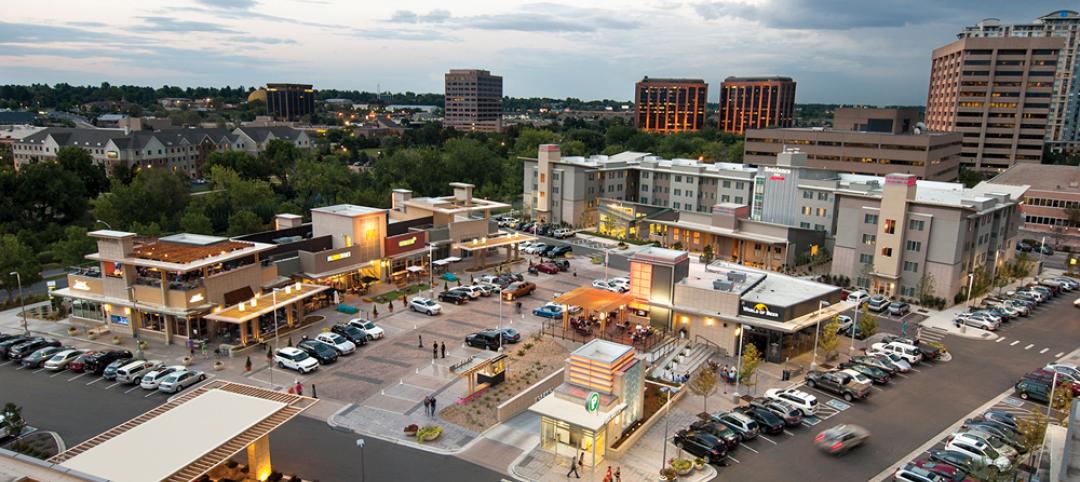“Dark deliveries” is a term that refers to receiving shipments in retail facilities when the store is closed or minimally staffed. “This can happen late at night, early in the morning, or when the retail operation is outside its peak activity mode,” says John Wright, Retail & Fitness Industry Business Leader at SALTO Systems.
While dark deliveries aren’t a new concept, they’ve recently gained more attention due to the increase in e-commerce and the need for efficient, round-the-clock operations. Wright notes that the Covid-19 pandemic also increased the trend toward dark deliveries in order to minimize interpersonal contact. “What’s new, however, is the advanced wireless access control technology — like SALTO KS — that makes managing dark deliveries more secure and efficient than ever before,” he adds.
The Basics of Wireless Access Control
One of the important features of wireless access control is how it is able to manage permissions remotely. Retail managers don’t need to be onsite to allow access, and they can specify certain windows of time during which delivery drivers can access the facility, all from a smartphone or computer.
This level of control has multiple benefits. It not only limits delivery access to specific windows of time during off-hours — it records who entered the facility and when. If a security issue should arise, this audit trail is key to investigating it. If unauthorized access should occur or a door is left open, real-time notifications alert management of the breach.
Another important benefit of wireless access control is how easy the system is to install. It doesn’t require expensive wiring and allows for a faster and smoother transition to dark deliveries. And as the retail operation grows, wireless systems are easier to scale up than traditional wired systems. This might involve additional retail locations, storage facilities or loading docks.
How Wireless Access Works
Wireless access control is managed remotely in the cloud. Access permissions are configured through a centralized management platform, usually accessible through a web browser or mobile app. This enables management to adjust permissions as necessary from anywhere at any time.
Entry to the facility can be scheduled for specific hours. However, should a delivery driver arrive at an unscheduled time, temporary access can be granted. For one-time or infrequent drivers, temporary access codes can be issued which expire after a set period of time. In an emergency situation, doors can be instantly locked or unlocked from the management platform, allowing for a quick response.
Security is an important feature of wireless access control. It can be set up to require multi-factor authentication, necessitating a second form of verification to enter the facility. Additional security is also provided through advanced encryption applied to the data collected by the system. “This ensures that information like access codes and logs are secure from cyberthreats,” says Wright. He notes that wireless access control can also integrate with other security systems, like closed-circuit TV, alarms and inventory control systems, becoming an integral part of a comprehensive security strategy.
Because the locks are battery-operated, they are easy to install and maintain, requiring no wiring. Battery life can be monitored remotely, ensuring the locks are always operational.
Real Benefits
Wireless access control reduces shrinkage, says Wright. “One of the primary areas where retailers experience losses is through shrinkage, which includes theft, fraud and inventory errors. Wireless access control helps by strictly regulating who has access to inventory areas, thereby reducing opportunities for theft.” The audit trails provided by the wireless systems makes it easy to track who has been where and when. This increases accountability among staff and contractors, and deters theft and mishandling of goods.
For retail businesses with compliance concerns, failing to adhere to regulations about who can access certain areas and when they’re permitted to can result in significant fines. Wireless access control monitors facility security and helps retailers avoid these financial penalties.
These systems offer additional financial benefits as well. Insurance premiums may be reduced due to decreased opportunity for theft, and the number of staff required to be on-premises during off-hours to receive deliveries can be reduced.
Other benefits include:
- Reduced risk of litigation by providing evidence in the event of an incident
- Vendor accountability, ensuring that deliveries are being made on time
- Providing cleaning and maintenance crew access during off-hours
- The ability to better manage energy usage, since smart access can be integrated with lighting and climate control systems
- Private shopping appointments for VIP customers
The real benefits of wireless access control can’t be overstated. Having complete control of who enters the retail establishment and when provides additional security, efficiency and financial advantages that mechanical locks simply cannot.
Related Stories
| Sep 3, 2014
New designation launched to streamline LEED review process
The LEED Proven Provider designation is designed to minimize the need for additional work during the project review process.
| Sep 2, 2014
Ranked: Top green building sector AEC firms [2014 Giants 300 Report]
AECOM, Gensler, and Turner top BD+C's rankings of the nation's largest green design and construction firms.
| Aug 21, 2014
RTKL's parent company Arcadis acquires Callison
The acquisition of Callison, known predominantly for its leadership in retail and mixed-use design, builds on Arcadis’ strong global design and architecture position, currently provided by RTKL.
| Aug 19, 2014
Goettsch Partners unveils design for mega mixed-use development in Shenzhen [slideshow]
The overall design concept is of a complex of textured buildings that would differentiate from the surrounding blue-glass buildings of Shenzhen.
| Aug 18, 2014
From icon to breadbasket: Gehry building to be turned into Whole Foods
The Howard Hughes Corporation, in association with architecture firm Cho Benn Holback + Associates, plans to turn the building—at least the majority of it—into a Whole Foods.
| Aug 18, 2014
SPARK’s newly unveiled mixed-use development references China's flowing hillscape
Architecture firm SPARK recently finished a design for a new development in Shenzhen. The 770,700 square-foot mixed-use structure's design mimics the hilly landscape of the site's locale.
| Aug 11, 2014
The Endless City: Skyscraper concept connects all floors with dual ramps
Rather than superimposing one floor on top of another, London-based SURE Architecture proposes two endless ramps, rising gradually with a low gradient from the ground floor to the sky.
| Aug 4, 2014
Retail Giants: Grocery-anchored centers, trophy malls among hot retail developments [2014 Giants 300 Report]
Despite the rapid growth of online shopping, the 'bricks and mortar' retail sector is faring quite well, headed by power centers, grocery-anchored centers, and trophy malls, according BD+C's 2014 Giants 300 Report.
| Jul 28, 2014
Reconstruction market benefits from improving economy, new technology [2014 Giants 300 Report]
Following years of fairly lackluster demand for commercial property remodeling, reconstruction revenue is improving, according to the 2014 Giants 300 report.
| Jul 28, 2014
Reconstruction Sector Construction Firms [2014 Giants 300 Report]
Structure Tone, Turner, and Gilbane top Building Design+Construction's 2014 ranking of the largest reconstruction contractor and construction management firms in the U.S.

















